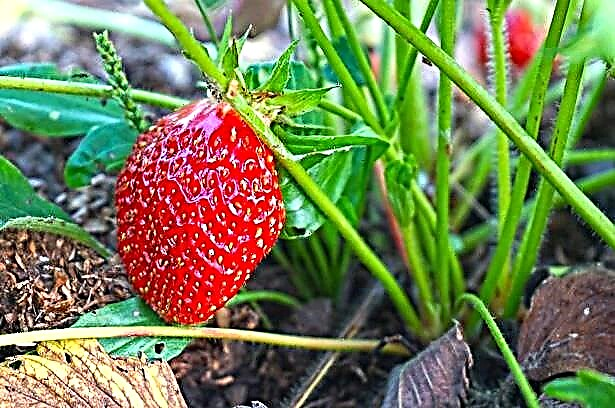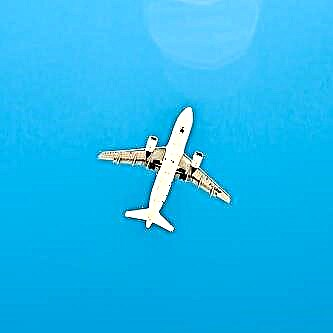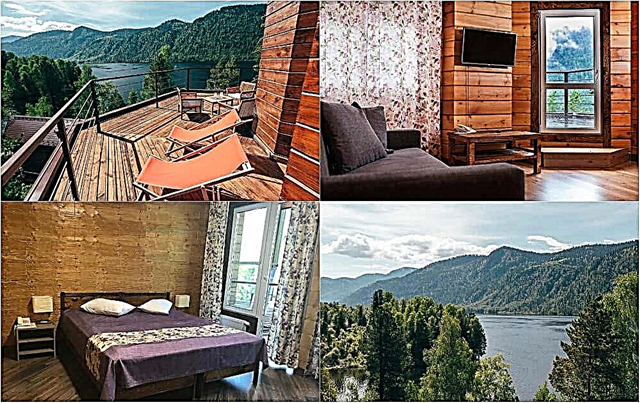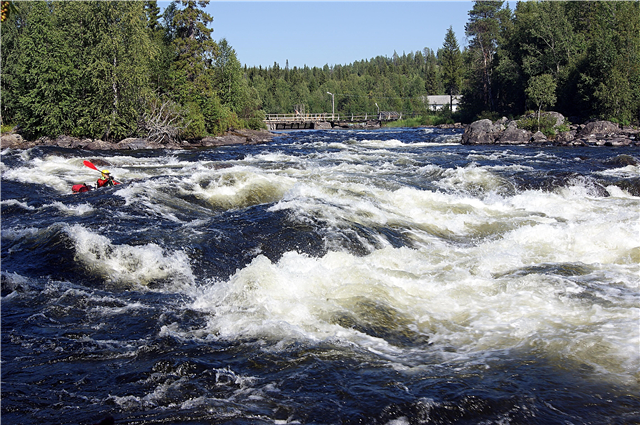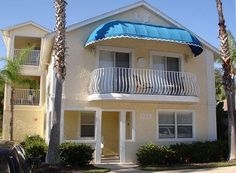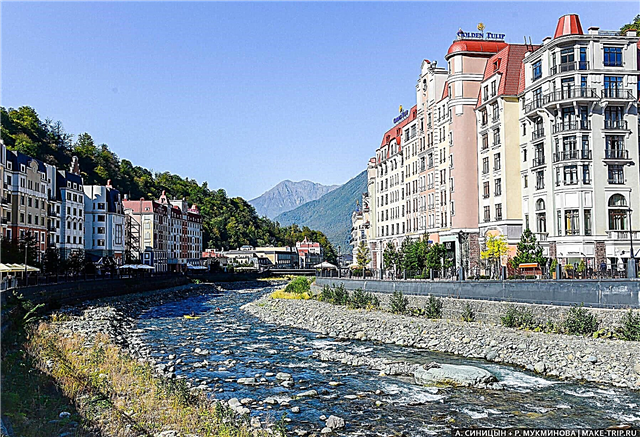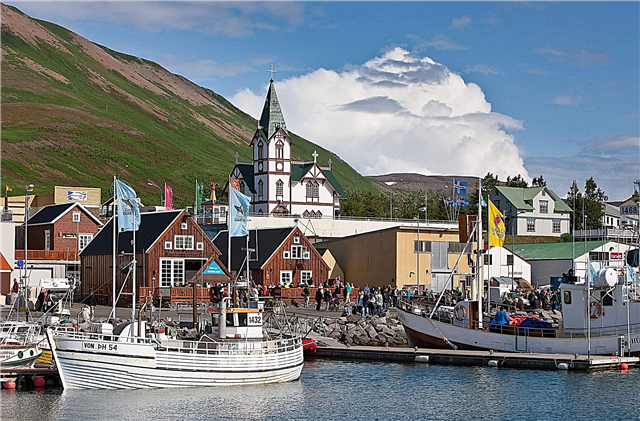Iceland is an island northern state. Its cities cannot boast of a population size, which does not prevent them from having a developed infrastructure and social sphere. Most of the settlements do not exceed the 5 thousand inhabitants mark. The capital of the country contrasts sharply against this background: almost 130 thousand citizens live in Reykjavik. However, in comparison with other capitals of Europe and the world, this is also a very modest figure.
Settlements in Iceland were often established as trading and fishing ports. In cities and now they are engaged in the extraction and processing of fish, although many have their own unique features. So Mosfellsbair is called "green" for the abundance of vegetation and greenhouses. Selfoss focuses on natural beauty in terms of tourism. And sun worshipers from all over the world come to Grindavik.
The largest cities in Iceland
List of the largest cities in terms of population in the country.
Reykjavik
The capital of Iceland, the largest and most populous city in the country. Sightseeing: the presidential residence Bessastadir, a concert hall and conference center "Harpa", Perlan - a building on a hill with a geyser and a winter garden inside, a cathedral, Videy island. There is a geothermal town and a national park nearby. Over the years, Reykjavik has been recognized as the cleanest, richest and most comfortable city in the world.
Population - 129 840 people (2019).

Kopavogur
It borders Reykjavik and is the second most populous in Iceland. The city actively uses geothermal springs: thanks to them, an outdoor pool, baths, saunas and a spa were built. The western part of Kopavogur is an ideal place for walking: near the ocean, Lake Ettlidavatn, lava fields. There are almost no historical sights, but there are several beautiful churches.
Population - 36 975 people (2019).

Habnarfjordur
Located 10 kilometers from the capital. Its harbor is shaped like a horseshoe. The city is famous for its industry and at the same time remains one of the cleanest in the country. The most popular excursion tour of the country "Golden Ring" starts from here. The surroundings are decorated with Lake Hvaleirarvatn. Hiking trails lead to it, but you can also choose the option with a horse ride.
Population - 29 799 people (2019).

Akureyri
The unofficial second or "North" capital of Iceland. The fjord, in which Akureyri is located, is covered by mountains from the winds of the Arctic, so there is a continental climate, not a maritime one. The air temperature in summer rises to 27 ° C. And the winters are frosty and snowy. A ski resort was built 7 kilometers from the city. There is an opportunity to practice various sports: tennis, hockey, golf.
Population - 18,925 people (2019).

Gardabire
The city received its current name only in 1976, and before that it was called Gardahreppur. Many film and television studios in the country are based here. Natural beauties of the area: the Snйfellsjökull glacier, which covers the stratovolcano, and Mount Esja. A picturesque view of the capital opens up from here. Only in Gardabaira from the Icelandic cities there are Costco and IKEA stores.
Population - 16 299 people (2019).

Keflavik
The first settlement on the site of the present city appeared in the 16th century. The natural harbor has simplified the fishing industry that is still practiced here. Seabirds nest in the area: Canadian geese, Arctic terns, puffins. The city is home to the football club of the same name - a four-time champion of the country. Iceland's largest airport is located three kilometers from Keflavik.
Population - 15 930 people (2019).

Mosfellsbair
Founded in 1604 near Reykjavik. The city is called green because there is much more vegetation here than in other parts of Iceland, the average annual temperature is higher and there are many greenhouses. While walking along the “trail of discovery”, you can learn more about the surroundings: along the paths there are stands with informational information. From the hills, in good weather, a beautiful view of the capital opens up.
Population - 11 463 people (2019).

Akranes
One of the main fishing ports in the country is located at the "whale" fjord. Natural attractions: Glymur waterfall and Akrafjal mountain. The National Ethnographic Museum is located right in the open air. There are also museums of the Icelandic Geodesic Society, Stone and Sports. Valuable architectural sites include a church, erected in 1896, and a lighthouse with an observation deck.
Population - 7 411 people (2019).

Selfoss
The area around the city offers tourists an extensive natural sightseeing program. Hawk Valley with geysers, Tinga Fields, volcanoes, a waterfall - this is not a complete list of the beauties of the area. Active recreation is represented by horseback riding, rafting and group hikes accompanied by an instructor. Selfoss has two interesting museums: Wood and Art and the Ghost Museum.
Population - 6 878 people (2016).

Celtyadnarnes
Located on the peninsula of the same name. Both amateur and professional sports are popular in the city: football, gymnastics, kettlebell lifting. The building of the Nesstof Medical Museum was built in the 60s of the 18th century. In Seltyadnarnes, geothermal sources are actively used, including for generating energy with subsequent heating and lighting of houses.
Population - 4 660 people (2018).

Westmannaeyjar
The archipelago consists of 14 islands. In addition, the water area is filled with several dozen rocks and cliffs. They are located south of Iceland. We live only in Heimaey - the largest land area. In the area there is increased volcanic activity. The migratory routes of many bird species run through Vestmannaeyjar, some make stops and even nest in the archipelago.
Population - 4 264 people (2014).

Søydaurkroukur
The urban area stretches along the southern part of the Skagafjord. Søydaurkroukur is the center of Icelandic horse breeding, where fishing and dairy farming are also developed, and a company for the production of mineral wool operates. In 2004, a stadium was built in the city. And almost a hundred years before that, a multisport club appeared. During the summer solstice, the polar day lasts 4-5 days.
Population - 4,028 people (2019).
Grindavik
The city and the community have the same name. Since 1974 Grindavik gained independence as an administrative unit. Since an esoteric center of sun worshipers has been created here, the influx of followers of the current and simply interested ones is constantly growing. No less popular is the Blue Lagoon geothermal spa resort, open a few kilometers from the city. The Museum of Sea Fish has been operating since 2002.
Population - 3 323 people (2018).
Isafjordur
The largest port on the Westfjords peninsula. The building of the first hospital has now been transformed into a cultural center. A music festival takes place in June, inviting participants from different countries. Isafjordur has hosted the Swamp Football World Cup twice. From the city by car, passing by the Dinyandi waterfall, it is easy to get to the Loutrabjarg cliff - the westernmost point of Europe.
Population - 2,571 people (2017).

Hveragerdi
The name of the city is translated as "Garden of Geysers". The city and the valley around it are adjacent to the Hengiedl volcano. It last erupted over 2 thousand years ago, but it is considered active. Volcanic processes occurring in its depths help to heat greenhouses and greenhouses. Tourists are most attracted by "Eden" - a winter garden, to which a restaurant and a souvenir shop are attached.
Population - 2,566 people (2018).

Eyilsstadir
Located near the lake. According to legend, the Lagarflouth snake, a "relative" of the Loch Ness monster, lives in its waters.There are few forests in Iceland, so the proximity to Hallormsstadarskogur, the largest forest area in the country, attracts additional flows of tourists to Eyilsstadir. Other attractions include the Hengifoss waterfall and the old Skriduklaustur manor.
Population - 2464 people (2018).

Husavik
The port city, the name of which is translated as "Home Bay". Tours start from Husavik, during which tourists can watch whales. Another area of excursions is the Myvatn volcanic region. Not far from the port is the Whale Museum. Earlier the Phallus Museum, which has no analogues in the world, was based in the city, but then it was transported to the capital.
Population - 2,307 people (2018).
Hoebn
It is located on the outskirts of Vatnajökull, the largest glacier in Iceland. In the middle of summer, the Lobster Festival takes place. An American military base was built near the city in the middle of the last century, which has now been converted into a radar station. People come to Höbn, among other things, to admire the Jökulsarlon glacier lagoon and climb the Hvanadalskhnyukur peak.
Population - 2,119 people (2012).

Borgarnes
The city is decorated with a monument to Egil Skallagrimsson - the great skald, whose biography formed the basis of the medieval saga. The local museum houses an extensive collection of artifacts related to the cultural characteristics of the indigenous peoples of the north. From Borgarnes to the capital of Iceland can be reached by the ring road - the main transport artery of the country.
Population - 1,875 people (2015).

Sandgerdi
The city was formed as a trading port: mainly fish was exported, and salt, timber and bread were imported. Gradually, the specialization was changed to fishing: up to 40 vessels went fishing from the port per day. A museum has been opened at the Sandgerdi Ocean Research Center. There are football and basketball teams in the city. Most of the residents work in other cities in the region.
Population - 1,710 people (2010).

Torlaukshobn
It is located on the southern coast, where there are practically no bays and bays of natural origin. Torlaukshobn is one of two ocean ports in this part of Iceland. Tourists have access to restaurants, a camping, a golf course, a sports complex, and a swimming pool. Fans of outdoor activities will give preference to skiing and motocross. There is a regular ferry to Heimaey Island.
Population - 1,651 people (2018).

Gardyur
The ocean gradually "captures" the coast in the area of the city. There are 3 fishing factories working here, whose employees both live in Gardyur and come to shift and watch from nearby settlements. One of the two lighthouses houses a museum displaying treasures found on sunken ships. The surroundings are popular with Canadian geese, Arctic terns and nesting gulls.
Population - 1,550 people (2009).

Nesköipstadur
Founded as a trading station in 1892. The main occupations of local residents are fishing, salting and selling herring. During the season, workers and fishermen from Europe come to the city to work. There is a nature reserve and a ski resort nearby. From Neskøipstadur there is an exit to the main transport artery of Iceland. Since it is difficult to move along it in winter, a tunnel was built in the 70s of the last century.
Population - 1,481 people (2016).
Dalvik
A large fishing port on the coast of the Eyjafjord. After the earthquake of 1934, the city had to be rebuilt almost from scratch. At the beginning of August, the Fiskidagurinn mikli festival is held, where fish snacks are served. It attracts about 30 thousand people annually. The area is popular for skiing and there is a golf club just a short drive from Dalvik.
Population - 1,454 people (2011).
Siglufjordur
City of the north coast of Iceland. Translation of the name - "Fjord of ship masts". Fishing is the main occupation of local residents. Since 1994, there has been a museum dedicated to this craft, and the Fisherman's Day is also celebrated. The highest mountain road in the country leads to Siglufjordur. It is only open during the summer and is used for hiking or horse riding.
Population - 1 206 people (2011).


